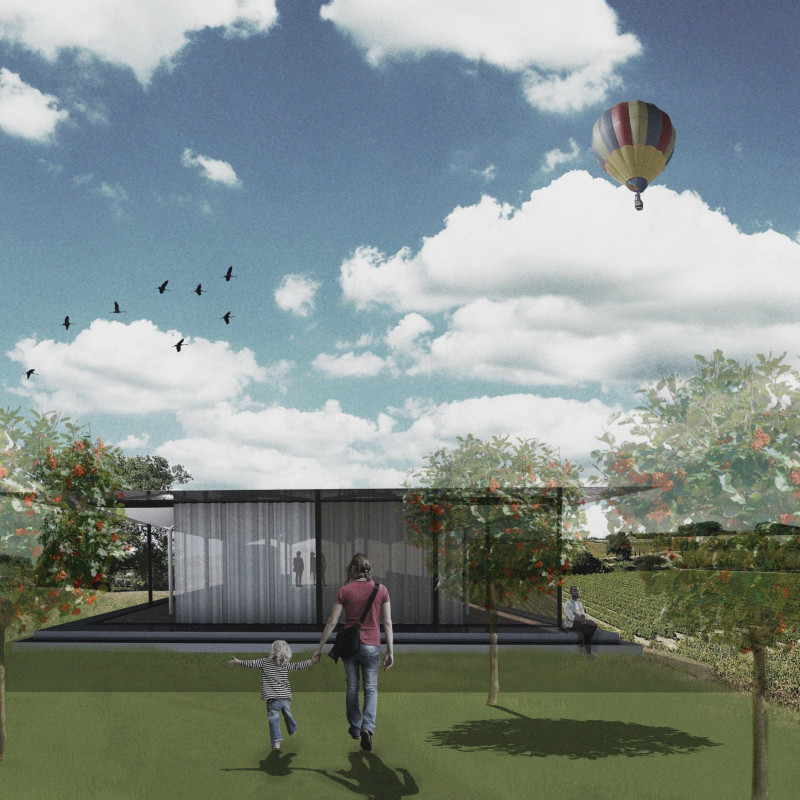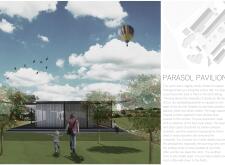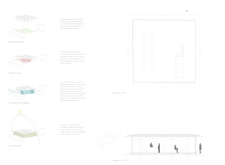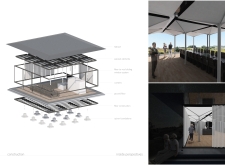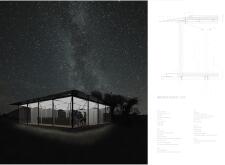5 key facts about this project
The pavilion’s core design revolves around the concept of openness and transparency, allowing natural light to permeate the interior. This design approach not only creates an inviting atmosphere but also emphasizes the connection between the structure and its natural context. The organization of space is characterized by an open floor plan that accommodates communal dining, promoting interaction among visitors. This approach enhances the social aspect of winetasting, aligning with the cultural importance of wine in the region.
Use of Materials and Structural Elements
The Parasol Pavilion employs a strategic selection of materials to enhance both the aesthetic appeal and functionality of the space. Key materials include cold galvanized steel for structural support, varnished beech for flooring, and extensive glazing that ensures uninterrupted views. The canopy structure is crafted from steel sheet metal, lightweight yet durable, further reinforcing the pavilion's modern architectural identity.
The interplay of materials facilitates climate control and adaptability within the pavilion. Floor-to-ceiling windows allow for significant natural light while creating a seamless transition between indoor and outdoor spaces. The inclusion of curtains provides users with options to regulate light and privacy as desired, enhancing user comfort throughout the day.
Innovative Design Features
What sets the Parasol Pavilion apart from other architectural projects is its capacity for dynamic interaction with the environment. The design employs a modular approach with sixteen square parasol elements that provide shade and protection while maintaining a connection to the outdoors. The unique roof design serves not only as a functional canopy but as a visual marker that enhances the aesthetic experience of the structure.
Additionally, the architectural layout invites exploration, leading visitors from the surrounding landscape to the central communal area. This design encourages a deeper connection between users and the surrounding vineyards. By emphasizing a harmonious blend of space, light, and materials, the pavilion captures the essence of winetasting culture while integrating seamlessly with its environment.
To gain further insights into the Parasol Pavilion, including detailed architectural plans, sections, and designs, explore the project presentation. This will provide a comprehensive view of the architectural ideas and concepts that underpin this distinctive project.


